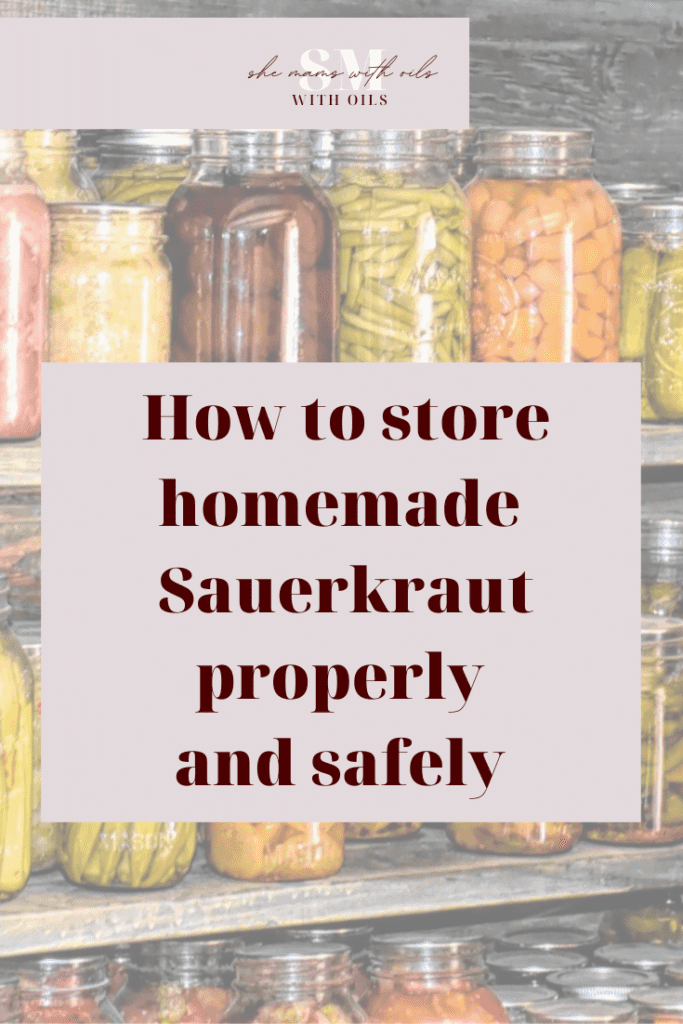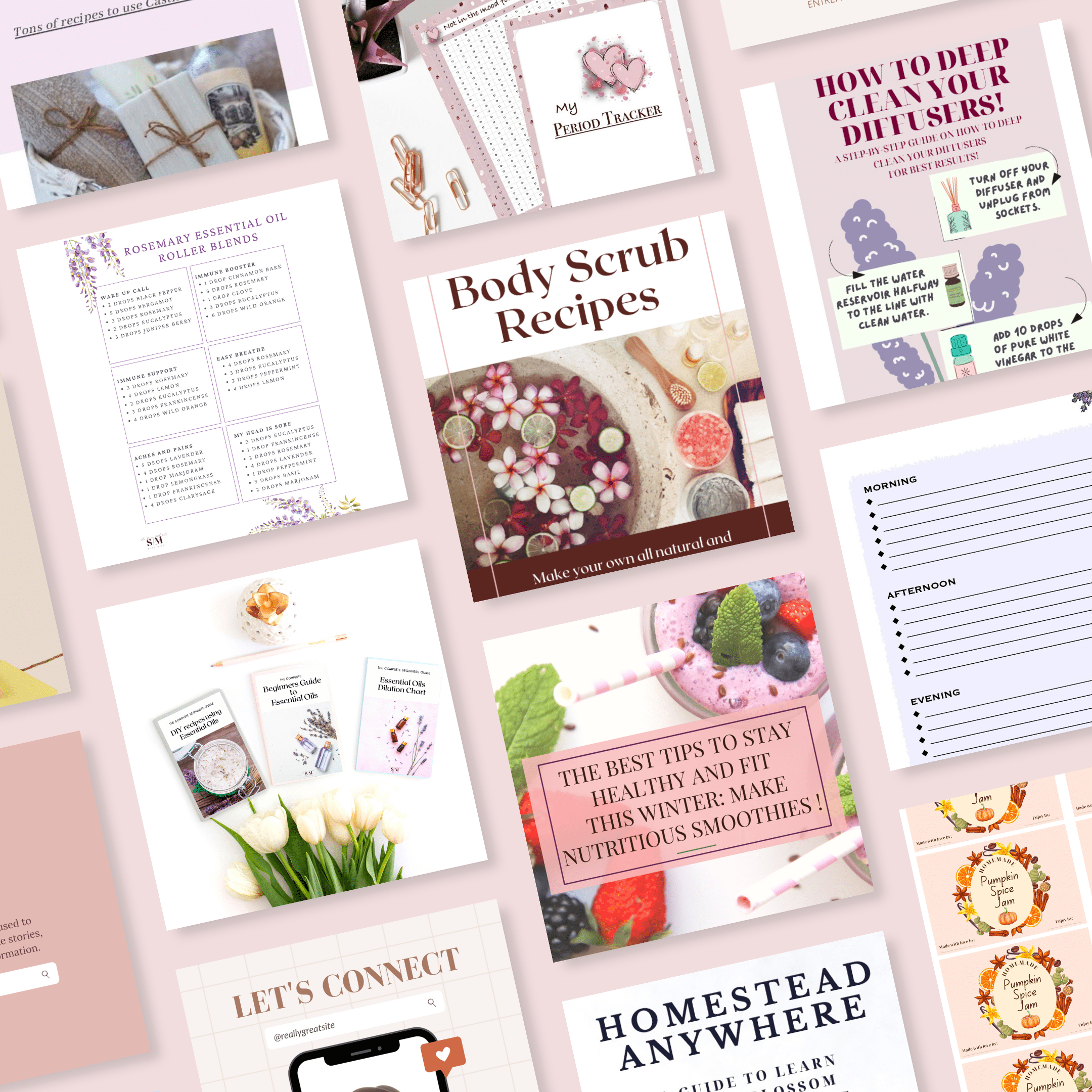HOW LONG DOES SAUERKRAUT LAST
How long does Sauerkraut last?
Are you curious about learning how to ferment foods, but don’t know where to start?
In this blog post, I’m going to show how to get started on fermenting foods with a very simple recipe for the classic sauerkrauts.
I’ll tell you how to create this easy and tasty food, filled with gut-friendly bacterias. Most importantly, I’ll show you the best way to store sauerkraut.

Learn how to tell if it’s gone bad. Free Recipe!
The following post contains affiliates, which means I’ll get a small commission if you decide to buy using the links provided. This will add NO EXTRA COST to you but it helps me to keep this blog up and running. Thank you. You can get more info by reading my Disclaimer page.
Subscribe to my YouTube Channel!
If you’d rather watch a video, you can watch on my Youtube channel!
Don’t forget to pin the post for later!
COOKING FROM SCRATCH TAKES TIME
Although I don’t consider myself to be a health freak, I do try my best to feed my family nutritious meals 99% of the time.
Of course we do have the occasional take away of fish and chips or pizza, and my kids are allowed treats and ice creams, but those are not the norm. They are the exception.
If you follow me, you know that the wellbeing of my family is my top priority, and cooking from scratch is just one of the ways I take care of it.
I try to create meals that are nutritious and healthy and that taste good. At the same time though, I don’t have hours on end to dedicate to cooking, so I tend to prepare meals that are not too time consuming or complicated.
FERMENTING FOODS
I know that cooking from scratch is time consuming, but if you get organised you will always have healthy and nutritious meals to feed your family.
Fermenting is the answer to your prayers if you are looking for healthy and tasty foods that are cheap and quick to prepare.
Fermented foods are extremely beneficial for gut health, taste absolutely delicious, take very little time to prep, and require no special and expensive kitchen tools.
IF YOU ARE READY TO LEARN MORE ABOUT FERMENTING, YOU CAN ASLO READ THESE POSTS HERE:
HOW I STARTED WITH FERMENTING FOODS
In my home we are big fans of fermented foods. They are so good for you, and taste delicious.
I learned how to ferment about 5 years ago, after attending a cooking class in a town nearby.
Having never tried anything like that before, I was amazed to learn how many health benefits fermented foods have!
I was literally hooked, and I have become a big fan of fermented foods since!
WHAT IS FERMENTATION?
Fermentation is one of the oldest forms of food preserving. Back when refrigerators and freezers didn’t exist, people used salt to preserve foods. Fermentation can be considered as a rudimental but highly effective and safe way to can foods.
Fermentation is the process through which we create an ideal environment for good bacterias to grow and thrive on foods, while the bad and harmful ones get destroyed.
From the BBC GOOD FOOD website: ”All vegetables are covered in the good bacteria lactobacillus, and when you slice up, grate and squeeze them with salt, they release their juice, which mingles with the salt to create a brine. Once contained within this briny environment, lactobacillus multiplies and begins to break down the ingredient, digesting the natural sugars and transforming them into lactic acid, which creates the tangy flavor and a sour environment that keeps the growth of nasty bacteria at bay.”
FERMENTED FOODS ARE GUT FRIENDLY
Because of the presence of good bacterias in fermented foods, foods such as sauerkraut or kimchi are highly digestible and are loaded with digestive enzymes, vitamins (like vitamins C and K) and other readily available nutrients.
THE HEALTH BENEFITS OF FERMENTED FOODS
Digestive enzymes help to process the food ingested, and to properly absorb nutrients. When you start consuming fermented foods on a regular basis, you will start noticing a difference in your overall health. They can enhance your immune system, decrease irritation of the bowels, help with digestive issues, help improve skin appearance, help solve allergies and food intolerances, reduce sugar cravings, and so on. You will feel a general improvement in your daily life, with higher levels of energy, mind clarity and better mood.
THE HERXHEIMER REACTION
It is not uncommon for people to have an initial adverse reaction to fermented foods. In many cases, people might have a gut so damaged that it can take a while to repair it.
When you ingest fermented foods, you are basically introducing a whole new set of bacterias into your body, and the bad bacterias will release toxins as they die off. This is nothing more than a natural detox process and your body will be able to manage it successfully.
The Herxheimer reaction can manifest itself as fever, chills, headaches, weakness, muscle aches, etc. , but it is not a serious condition, and can clear itself naturally, as soon as your body finds a new balance thanks to the new good bacterias introduced through your diet.
Therefore, it is very important that you introduce new fermented foods slowly, starting with very small amounts every day. As time goes by, you can slowly increase the portion sizes.
MAKING SAUERKRAUT
Many people might have a basic knowledge of fermentation and might be able to make drinks such as kombucha and kefir. Starting fermenting vegetables is the next step.
Sauerkraut is so easy to make and tastes delicious. Therefore it is the recipe that people normally try first, as a way to start dabbling with fermenting.
In my home, Sauerkraut is probably the one ferment we consume the most.
It only takes about 10 minutes to prepare, and you only need a glass jar to make it.
THE “CULTURED CLUB” BY DEARBHLA REYNOLDS
The recipe I use all the time, I got from the book “The Cultured Club” by Dearbhla Reynolds.
Let me tell you a little bit about it.
I was first introduced to this publication by a dear friend, who showed it to me one morning over coffee and cake at her house.
After a quick flick through the pages, I could see why she loved the book!
The author is an Irish woman who, thanks to her upbringing, always had a love for wholesome and nutritious foods, and so, after becoming a mother, she started experimenting with fermenting foods, in order to give her children the best possible start in life.
The book is filled with wonderful pictures of mouthwatering food, and you can find anything from fermented fruit to vegetables, from breads to dips, from breakfasts to soups to desserts ….. and I could go on and on!
She explains what fermentation and fermented food is, and the basic principles of it.
The recipes are all extremely simple and easy to follow, and she provides a full list of the very few items and tools you need to get started.
I can’t recommend this book enough, honestly. This book has given me all the info I needed, and I haven’t bought any other publication since.
The Cultured Club: Fabulously Funky Fermentation Recipes
WHAT IS SAUERKRAUT?
Sauerkraut is nothing more than fermented, or sour cabbage!
Many culinary cultures such as the Irish one, treat cabbages as a vegetable that can only be served after being boiled, and generally as a side dish to bacon or ham.
Boiling vegetables unfortunately will kill the vast majority of their nutrients, and therefore will make them practically useless in our diets.
Sauerkraut, on the other hand, is loaded with vitamins, probiotics and beneficial bacteria, and mighty goodness, and your body will thank you for it in the long run.
For recipes on how to ferment tomatoes and make salsa, you can check this blog post here:
CLASSIC SAUERKRAUT RECIPE
This is a very easy and simple recipe to make.
INGREDIENTS:
You will need:
- Red cabbage or white cabbage, about 800g to 1Kg;
- 2 Tbsp of Sea Salt (best not to use table salt);
- 1 and a half Tbsp of juniper berries (optional);
- A glass jar;
- Fermenting weights (optional);
- A large bowl.
INSTRUCTIONS:
Remove the outer leaves of the cabbage and set them aside.
Cut the cabbage in half and remove and discard the core.
Shred the cabbage finely (you can use a food processor for this, if you have one).
Place the shredded cabbage in a large bowl and add the salt. Using your hands, massage the cabbage thouroughly, in order to cover it completely with the salt.
Let it sit for at least half an hour, and until it starts to “sweat”.
When a good amount of “brine” has formed (the brine being merely the salty water released by the cabbage), add the juniper berries and mix well.
Start filling your glass jar, making sure to press the cabbage down as much as possible, as to not leave gaps in between. As you push it down, you will notice that more brine gets released.
Keep filling the jar till you only leave about 2.5 cm from the top.
IMPORTANT:
For the fermentation to be successful, and to avoid the formation of mould, it is vital to keep the cabbage submerged in its brine. That’s why you should keep the outer leaves of the fresh vegetable! Once you have filled the jar, lay the leaves on top of the shredded cabbage, in order to cover it completely.
At this stage, you should put some sort of weight on the leaves, and that’s when fermenting weights come in handy.
Close the jar tightly and let it sit on your kitchen countertop for at least a week. After about 7 or 8 days, you can taste it and see if it’s ready. I like to let the sauerkraut rest for about 10 days, as I prefer it a bit more sour.
When you are happy with both the texture and the taste of your ferment, store it in the fridge for best results.
SAFETY NOTES
Don’t forget that, when the sauerkraut is resting in the kitchen, you will need to “burp” (which means “to open”) the jar at least once a day, in order to release the accumulated gas. Failure to do so can result in an excessive build up of carbon dioxide in the jar, with the glass possibly exploding! Serious damage can occur to your environment, and to people, if you fail to observe this safety advice!
This is very very important, and you must open the jar daily!
HOW LONG DOES HOMEMADE SUAERKRAUT LAST?
Now that you have made your first jar of delicious, homemade sauerkraut, you will want to learn how to store it properly, and how long it will last.
Store bought sauerkraut of course comes with a long shelf life and with a clear expiration date. That is obviously not the case with homemade fermented cabbage!
Although salt is a very efficient natural preservative, homemade, fresh sauerkraut can go bad.
There is no precise answer to the question of what is the exact shelf life of sauerkraut. Different methods of storing it, will determine its best before date.
WHAT ARE THE OPTIMAL STORAGE CONDITIONS OF HOMEMADE SAUERKRAUT?
Sauerkraut can be refrigerated, left on the kitchen countertop, frozen, or canned.
Leaving it in the kitchen will obviously give you the shortest shelf life, while canning it will provide the longest one.
how long does sauerkraut last On the kitchen counter?
You can leave the fermented sauerkraut to rest on your kitchen counter for up to 6 weeks, but I personally would not recommend it.
Keeping it at room temperature means that the fermentation process will continue. Therefore, you can expect the final product to become increasingly sour in taste, and with a soggy consistence.
Also, you will need to keep burping the jar daily.
how long does sauerkraut last in the fridge?
Cold storage naturally will provide a long storage life for your own sauerkraut.
Properly fermented and refrigerated sauerkraut will last for about one to 2 years in your fridge, provided that you and your family will not consume it before that!
When you keep it in the fridge, it will also have very minimal changes in texture, smell and taste.
You will not need to burp the jar if the sauerkraut is kept in the fridge.
how long does sauerkraut last in the frEEZER?
You can freeze sauerkraut if you prefer, but, again, this is not something I would advice. Freezing it will mean that some of its nutrients will be lost due to the very low temperature, and I feel that this would be completely counterproductive. After all, you are trying to consume fermented foods because of their health benefits and highly nutritious contents!
However, if you have prepared large batches of sauerkraut, and you don’t have enough room to store it in the fridge, you can most certainly freeze it.
Once frozen, it will last for 2 years plus in the freezer.
Taste, colour and texture will be unaffected by this method of preservation.
HOW TO SAFELY FREEZE SAUERKRAUT
If you do decide to freeze your homemade sauerkraut, there are a few things to remember and observe.
- SMALL BATCHES: first of all, do it in small batches. It is best to freeze smaller portions in separate containers. This will make the defrosting process faster, but also will avoid any waste, as you will only thaw what you need at any given time.
- USE heavy-duty FREEZER BAGS: instead of placing a glass jar in the freezer, use small, freezer safe, resealable, plastic bags (or any plastic container, as long as it is a sealed container). This will help with the thawing process and also will save space in your freezer.
- Leave space in your container: don’t forget that liquids tend to expand when frozen, so make sure to leave some room at the top of the container, to avoid it exploding in your freezer.
- DON’T USE TOO MUCH LIQUID: if you use too much brine before freezing the sauerkraut, when you defrost it, it may become soggy and unpleasant in texture.
- USE A VACUUM SEALER: if you have one, it is very useful to help get rid of as much air as possible and will create an “airtight container”.
How To Thaw Sauerkraut
To defrost your homemade sauerkraut, I would recommend you remove the plastic bag (or glass container, or whatever you used) from the freezer the night before you want to use it, and let it thaw slowly in the fridge overnight.
This is the safest way to defrost sauerkraut, and it will leave you with a window of a few days to use it safely.
how long does sauerkraut last if canned?
Canning foods, even fermented ones, is obviously the most effective way of preserving them and will provide the longer shelf life. Canned foods in a properly sealed jar can last for years.
The downside though is that many nutrients will be lost in the canning process, because of the high temperatures needed. As a result, you won’t be able to avail of the full health benefits of your sauerkraut.
Canning also requires a few cooking tools that you might not necessarily already own, storage space such as a pantry or a cellar, and it’s also time consuming.
how do you know if your sauerkraut has gone bad?
There are a few indicators that will tell you if your sauerkraut has gone bad. It is very important to discard the entire jar of sauerkraut at the first signs of spoiling. it is always best to be safe than sorry!
- SMELL: If something doesn’t smell right, that generally means it’s gone bad. Spoilt sauerkraut has a very bad, strong, rotting, foul odor.
- Texture and Colour: Spoiled sauerkraut can become slimy. Also, if there’s a growth of dangerous bacterias or mould on it, it can develop greenish spots on the top layer. If that occurs, even if it’s limited to the top of the jar, discard the whole content immediately.
- TASTE: When in doubt, you can also taste it. The flavor of sauerkraut should be strong but pleasant. If it has developed an odd, off-putting taste, just discard the jar. In my opinion, it is always best to err on the side of caution when it comes to preserved food.

CONCLUSIONS
I hope you will give sauerkraut a try if you have never done it before!
It is certainly a delicious food to have ready in the fridge for a quick snack or a side dish to your favourite meal.
Let me know in the comments if you try it!
Till next time, Dee.
Hi, I’m Dee!
Mom of three; printables creator, natural solutions, simple living and homemade food enthusiast; “Outlander” fanatic.
When I’m not busy writing and designing, you can always find me covered in a cloud of flour in the kitchen, playing and crafting with my children, or making up some blends with my Essential Oils. Also I’m practically obsessed with Crystals and reading during my spare time.
Come along on our crazy journey as a family living in the countryside of Ireland!





Grazie mille Deborah per l’informazione su I sauerkrauti.
Non ero a conoscenza prima.
Cerchero di prepararli. X
You are most welcome